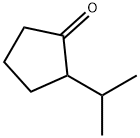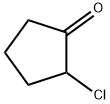Chlordecone , Analysis standard , 143-50-0
CAS NO.:143-50-0
Empirical Formula: C10Cl10O
Molecular Weight: 490.64
MDL number: MFCD00213544
EINECS: 205-601-3
PRODUCT Properties
| Melting point: | 350℃ (DEC.) |
| Boiling point: | 450.5±45.0 °C(Predicted) |
| Density | 2.27 |
| vapor pressure | 2.25 x 10-7 mmHg at 25 °C (Kilzer et al., 1979) |
| Flash point: | >100 °C |
| storage temp. | 0-6°C |
| solubility | Soluble in acetic acid, alcohols, and ketones (Windholz et al., 1983) |
| form | Tan to white crystalline solid |
| Water Solubility | (mg/L): 7.600 at 24 °C (shake flask-nephelometry, Hollifield, 1979) 2.7 at 20–25 °C (Kilzer et al., 1979) |
| Merck | 13,2098 |
| Henry's Law Constant | (x 10-2 atm?m3/mol):
3.11 at 25 °C (approximate - calculated from experimentally determined water solubility and
vapor pressure values) |
| Exposure limits | NIOSH REL: TWA 1 mg/m3. |
| IARC | 2B (Vol. 20, Sup 7) 1987 |
| EPA Substance Registry System | Chlordecone (143-50-0) |
Description and Uses
Chemically, kepone is a chlorinated polycyclic insecticide and fungicide. Chlordecone was used as an insecticide for leaf-eating insects, ants, and cockroaches; as a larvicide for flies; and for control of insects that attack structures. Chlordecone was also used on bananas, nonbearing citrus trees, tobacco, ornamental shrubs, lawns, turf, and flowers. The dry powder is readily absorbed through the skin and respiratory tract. Occupational workers handling kepone without appropriate workplace safety dress and PPE suffered chemical poisoning. The symptoms included, tremors, jerky eye movements, memory loss, headaches, slurred speech, unsteadiness, lack of coordination, loss of weight, rash, enlarged liver, decreased libido, sterility, chest pain, and arthralgia (sharp pain, extending along a nerve or group of nerves, experienced in a joint and/or joints). Chlordecone was first introduced as a pesticide in 1958 and was used until 1978, when its use in the United States was discontinued (NCI 1976, IARC 1979, HSDB 2009).
Insecticide; fungicide.
Safety
| Symbol(GHS) |    GHS06,GHS08,GHS09 |
| Signal word | Danger |
| Hazard statements | H301+H311-H351-H410-H301-H311 |
| Precautionary statements | P273-P280-P301+P310-P312-P501 |
| Hazard Codes | T,N |
| Risk Statements | 24/25-40-50/53 |
| Safety Statements | 22-36/37-45-60-61 |
| RIDADR | 2761 |
| OEB | E |
| OEL | TWA: 0.001 mg/m3 |
| RTECS | PC8575000 |
| HazardClass | 6.1(b) |
| PackingGroup | III |
| Hazardous Substances Data | 143-50-0(Hazardous Substances Data) |
| Toxicity | LD50 orally in rats: 125 mg/kg (Gaines) |






